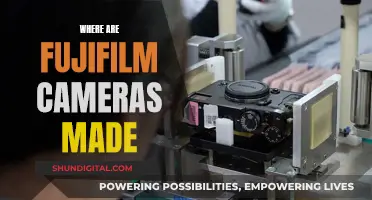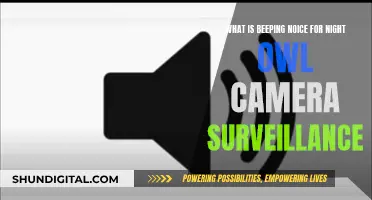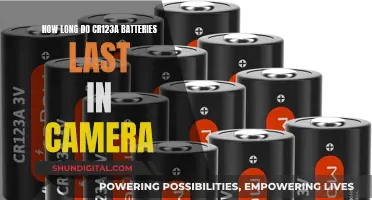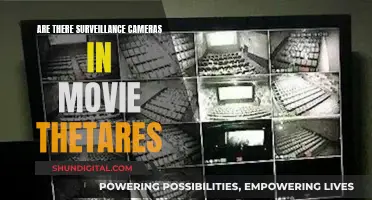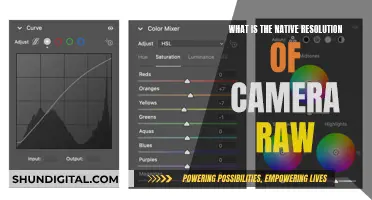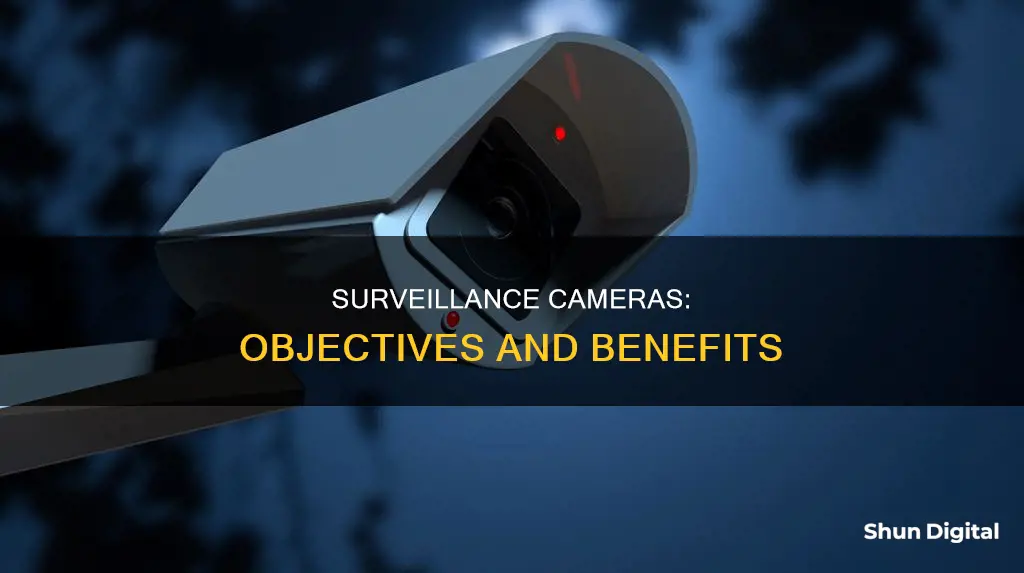
Surveillance cameras are an increasingly common feature of modern life, but what are they for?
Surveillance cameras are used to monitor behaviour and gather information. They are often used by governments to gather intelligence, prevent crime, and protect people and property. They are also used by businesses to prevent theft and monitor employees.
Surveillance cameras are usually connected to a recording device or IP network and may be monitored by security staff or law enforcement. They are typically placed in public spaces, but they can also be used to monitor indoor areas such as shops and warehouses.
The use of surveillance cameras has been criticised by civil liberties activists for violating privacy. However, supporters argue that they help to deter crime and provide valuable evidence when crimes are committed.
With the rise of facial recognition technology and the increasing prevalence of surveillance cameras, the debate around their use is likely to continue.
| Characteristics | Values |
|---|---|
| Purpose | Information gathering, influencing, managing, or directing |
| Monitoring | Behaviour, activities, information |
| Observation | From a distance |
| Equipment | Electronic equipment, e.g. CCTV |
| Interception | Electronically transmitted information, e.g. internet traffic |
| Technical Methods | Human intelligence gathering, postal interception |
| Users | Citizens, governments, criminal organizations, businesses, religious organizations, auditors |
| Concerns | Privacy violations |
| Benefits | Crime prevention, protection of people, groups, objects, investigation of crime |
What You'll Learn

Crime prevention and detection
Surveillance cameras are an effective tool for crime prevention and detection. They can be used to monitor a building's perimeter, providing proactive protection from all angles and at all hours. This helps to deter potential intruders and can also be used to identify them if a crime does occur.
For example, in the aftermath of the Boston Marathon bombing, investigators were able to identify the suspects by sifting through video images captured by the city's cameras. This led to other major cities reaffirming and expanding their investment in surveillance camera technology.
Research has shown that surveillance cameras are linked to reduced crime rates. In Baltimore and Chicago, for instance, the presence of cameras was linked to a decrease in crime, even beyond the areas under camera coverage. Similarly, in Orange County, New Jersey, the installation of surveillance cameras resulted in a 50% drop in all types of crime.
Surveillance cameras can also aid in the investigation and prosecution of crimes. They provide additional leads for detectives, aid in securing witness cooperation, and complement eyewitness evidence in a courtroom setting.
In addition to crime prevention and detection, surveillance cameras can be used to protect products, maintain oversight of employees, and provide peace of mind for customers and employees.
However, it is important to consider privacy concerns when employing surveillance technology. Measures should be taken to ensure that cameras do not invade private areas, and law enforcement agencies should have clear policies governing the use of surveillance cameras, with consequences for misuse.
The First Mass-Produced Camera: A Historical Perspective
You may want to see also

Protecting staff and products
Surveillance cameras are an effective way to protect staff and products. They can be used to monitor the perimeter of a building and guard property from all angles, 24/7. This can help to deter and detect criminal activity such as theft and trespass, as well as anti-social behaviour.
For businesses, indoor surveillance cameras can be used to protect products by acting as a deterrent to customers who may be considering shoplifting. They can also be used to monitor staff and detect internal theft. Surveillance cameras can also be used to monitor high-traffic areas such as parking lots, front entryways, and stairwells, which can be major liability risks for businesses.
For homeowners, surveillance cameras can be used to protect delivered packages from potential thieves. They can also be used to monitor outdoor areas that are at risk of trespassers.
Surveillance cameras can provide valuable oversight and help to ensure the safety of staff and the protection of products.
Polaroid Camera Battery Requirements: What You Need to Know
You may want to see also

Monitoring high-risk areas
Surveillance cameras are an effective tool for monitoring high-risk areas and enhancing security. Here are some key considerations and best practices for using surveillance cameras in high-risk locations:
Visibility and Signage:
The presence of security cameras in high-risk areas should be highly visible. This visibility serves as a deterrent, sending a clear message to potential intruders or criminals that they are being watched. It is recommended to pair surveillance cameras with clear signage, such as "Smile, you're on camera," to reinforce the monitoring and further deter criminal activity.
High-Definition Cameras:
When monitoring high-risk areas, it is crucial to invest in high-definition or high-resolution cameras. These cameras provide clear and detailed footage, ensuring that no crucial details are missed. In the event of an incident, high-quality footage can be the difference in identifying individuals and actions, leading to swift incident resolution and prosecution.
Strategic Placement:
Surveillance cameras should be strategically placed in high-risk areas to maximize their coverage. This includes monitoring not only the obvious spots but also the less obvious nooks and crannies where illicit activities may occur. By covering all potential angles, you create a comprehensive security net.
Regular Maintenance and Monitoring:
It is essential to maintain and monitor surveillance cameras regularly. This ensures that the cameras are always operational and effective. Regular maintenance includes checking camera functionality, image quality, and connectivity. Monitoring involves actively reviewing footage and responding to any incidents or suspicious activities.
Data Storage and Security:
Surveillance cameras in high-risk areas should have secure data storage solutions. This can include on-site and off-site digital video recorders (DVRs) or network video recorders (NVRs). Off-site storage is particularly crucial in high-risk areas to prevent the loss or damage of recording devices during a security breach. Cloud-based storage solutions offer an extra layer of protection and can be accessed remotely.
Integration with Other Security Measures:
Surveillance cameras can be even more effective when integrated with other security measures. This includes alarms, motion sensors, access control systems, and security personnel. By combining multiple layers of security, you create a robust and comprehensive security infrastructure.
Real-Time Monitoring and Response:
In high-risk areas, consider implementing real-time monitoring solutions. This involves having trained personnel actively monitor camera feeds and respond to any suspicious activities or security breaches immediately. Real-time monitoring can also facilitate quicker incident response and improve the chances of apprehending perpetrators.
Flexibility and Adaptability:
High-risk areas may change over time, and it is important to be flexible and adaptable with surveillance camera placement and coverage. Regularly review and assess the risks and adjust the camera setup accordingly. This ensures that the surveillance system remains effective and relevant to the evolving security landscape.
In conclusion, surveillance cameras play a vital role in monitoring high-risk areas. By following these best practices and considerations, businesses and organizations can enhance their security measures, deter criminal activities, and improve their overall safety.
Beat Arizona Traffic Camera Tickets: A Comprehensive Guide
You may want to see also

Providing peace of mind
Surveillance cameras are an effective way to enhance security and provide peace of mind for homeowners and businesses alike. Here are some ways in which surveillance cameras can provide peace of mind:
Enhanced Security Measures
Strategically placed surveillance cameras act as an extra set of eyes, providing continuous monitoring of your property. By placing them in key locations such as entrances, driveways, and backyard areas, you can deter potential burglars and quickly identify any suspicious activities. With the ability to record high-quality video footage, you have solid evidence in case of any security breaches, which can be crucial for identifying and apprehending suspects.
Remote Monitoring and Mobile Alerts
One of the greatest advantages of modern surveillance systems is the ability to monitor your home or business remotely. Whether you're at work, on vacation, or simply out running errands, you can access live security camera feeds using your smartphone, tablet, or computer. Many systems also offer instant mobile alerts in case of detected motion or unauthorized access, allowing you to take immediate action and alert the authorities if necessary. This remote accessibility provides peace of mind, knowing that you can check in on your property at any time, from anywhere.
Protecting Outdoor Spaces
Surveillance cameras are not limited to indoor use. By installing security cameras in your backyard, pool area, or other outdoor spaces, you can ensure the safety and security of these areas. This is especially useful during the summer months when people tend to spend more time outdoors. With outdoor surveillance, you can keep an eye on your children or pets and ensure their well-being. Additionally, these security cameras can help prevent theft or vandalism, providing a safe and secure environment for you to enjoy your outdoor activities without worry.
Integration with Smart Home Devices
Today's surveillance cameras often seamlessly integrate with smart home devices, creating a comprehensive network of protection. For example, you can connect your cameras with smart doorbells, smart locks, or motion sensors. When the camera detects motion, it can trigger the smart doorbell to alert you and display the live camera feed on your smartphone. This level of integration enhances your overall security system and provides peace of mind, knowing that your home is protected by a network of interconnected devices.
Additional Safety Features
Surveillance cameras offer more than just video footage. Many models are equipped with advanced features such as night vision capabilities, allowing you to monitor your property even in low-light conditions. Some cameras also have two-way audio, enabling remote communication with family members, visitors, or delivery personnel. These additional features provide an extra layer of security and help ensure the safety of your home or business, giving you peace of mind.
Surveillance Cameras: Effective Security or Privacy Invasion?
You may want to see also

Gathering evidence
Surveillance cameras are an important tool for gathering evidence to support criminal investigations and prosecutions. They can provide valuable visual information that would otherwise be difficult or impossible to obtain. This can include capturing footage of a crime in progress, identifying suspects, and tracking their movements.
For example, in the case of the Boston Marathon bombing, investigators were able to quickly identify the suspects by reviewing video images captured by the city's surveillance cameras. This led to the swift apprehension of the bombers. Surveillance cameras can also help in the prevention of crimes by acting as a deterrent. The presence of cameras can make potential criminals think twice before committing a crime, knowing that they are more likely to be caught on camera.
In addition, surveillance cameras can provide valuable evidence for prosecuting crimes that have already occurred. They can capture images and videos of the crime scene, which can be used to identify suspects, analyse their behaviour, and determine the sequence of events. This can be especially useful in cases where there are no eyewitnesses or when eyewitness testimony is unreliable.
Surveillance cameras are also used in businesses to protect products, maintain oversight of employees, and monitor high-traffic areas. This can help deter theft, improve security, and provide valuable evidence in the event of a crime. For instance, a business with surveillance cameras can review footage to identify a shoplifter or a suspicious employee and provide that footage to law enforcement.
While surveillance cameras can be a valuable tool for gathering evidence, it is important to consider privacy concerns and the potential for abuse. The use of surveillance cameras should be regulated to ensure that they are used responsibly and that the privacy rights of individuals are respected.
Exploring the Sync Button in Adobe Camera Raw
You may want to see also
Frequently asked questions
Surveillance cameras can help prevent crime and provide evidence for criminal investigations. They can also be used to monitor public spaces and ensure safety in high-risk areas. Additionally, they can be used to monitor employees and improve workplace productivity.
Surveillance cameras can be intrusive and violate people's privacy. They may also be used for malicious purposes, such as stalking or peeping into private residences. There is also a potential for abuse of power by those who control the cameras, such as government officials or law enforcement.
Surveillance cameras are typically hidden and used for monitoring purposes, while security cameras are visible and designed to deter crime. Surveillance cameras can detect motion and identify objects in motion, while security cameras only record what is happening from their angle of view.



